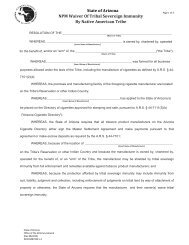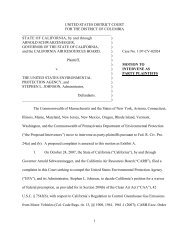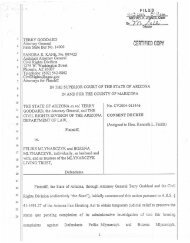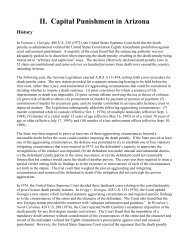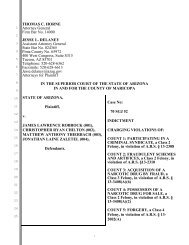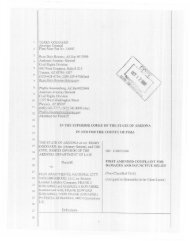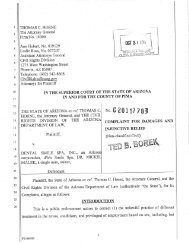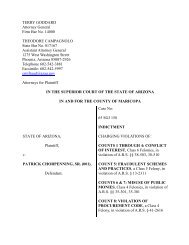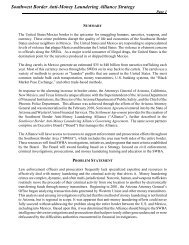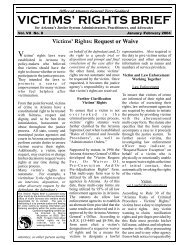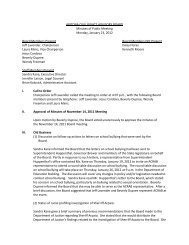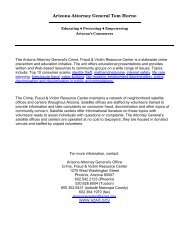2010 Arizona Youth Survey - Arizona Attorney General
2010 Arizona Youth Survey - Arizona Attorney General
2010 Arizona Youth Survey - Arizona Attorney General
You also want an ePaper? Increase the reach of your titles
YUMPU automatically turns print PDFs into web optimized ePapers that Google loves.
School and Community Improvement Using <strong>Survey</strong> Data<br />
What are the numbers telling you?<br />
Review the charts and data tables presented in this report. Note your findings as you discuss the following questions.<br />
• Which 3-5 risk factors appear to be higher than you would want when compared to the Bach Harrison Norm?<br />
• Which 3-5 protective factors appear to be lower than you would want when compared to the Bach Harrison Norm?<br />
• Which levels of 30-day drug use are increasing and/or unacceptably high?<br />
o<br />
o<br />
Which substances are your students using the most?<br />
At which grades do you see unacceptable usage levels?<br />
• Which levels of antisocial behaviors are increasing and/or unacceptably high?<br />
o<br />
o<br />
Which behaviors are your students exhibiting the most?<br />
At which grades do you see unacceptable behavior levels?<br />
How to identify high priority problem areas.<br />
• Look across the charts – which items stand out as either much higher or much lower than the other?<br />
• Compare your data with statewide, and/or national data – differences of 5% between local and other data are<br />
probably significant.<br />
• Prioritize problems for your area – Make an assessment of the rates you’ve identified. Which can be realistically<br />
addressed with the funding available to your community? Which problems fit best with the prevention resources<br />
at hand?<br />
• Determine the standards and values held within your community – For example: Is it acceptable in your<br />
community for a percentage of high school students to drink alcohol regularly as long as that percentage is lower<br />
than the overall state rate?<br />
Use these data for planning.<br />
• Substance use and antisocial behavior data – raise awareness about the problems and promote dialogue.<br />
• Risk and protective factor data – identify exactly where the community needs to take action.<br />
• Promising approaches – access resources listed on the last page of this report for ideas about programs that have<br />
been proven effective in addressing the risk factors that are high in your community, and improving the<br />
protective factors that are low.<br />
Risk<br />
Factors<br />
Sample<br />
6th grd Fav. Attitude to<br />
Drugs (Peer/Indiv. Scale)<br />
@ 15% (8% > 8-state av.)<br />
Priority Rate 1<br />
Priority Rate 2<br />
Priority Rate 3<br />
Protective<br />
Factors<br />
30-day<br />
Substance<br />
Abuse<br />
Antisocial<br />
Behavior<br />
10th grd - Rewards for<br />
prosocial involvm. (School Domain)<br />
40% (down 5% from 2 yrs<br />
ago & 16% below state av.)<br />
8th grd Binge Drinking@13%<br />
(5% above state av.)<br />
12th grd - Drunk/High at School<br />
@ 21%<br />
( about same as state,<br />
but remains a priority.)<br />
10



